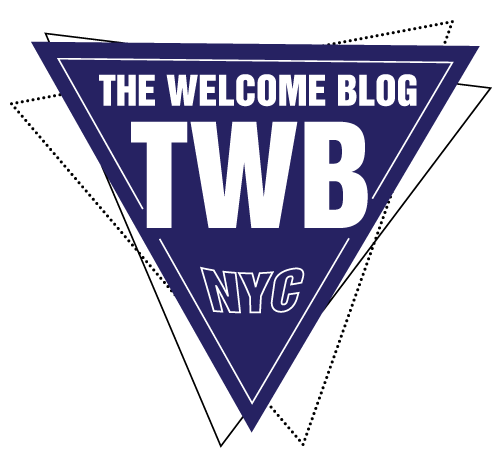Christmas Tales in Every Store Window
Store windows are becoming better and better each year. Christmas is the season where some cities around the world become a magical tale in every corner – or every shop window. The holiday season is where people sometimes travel ten or more hours, to just see some snowing days or to spend Christmas with their families. Also, Christmas is that time of the year where all retailers are eager to get to our wallets. Well, we know that. Still, we are seduced year after year especially by the sweet and irresistible song of the Sirens that comes out from every shop window – inviting us to enjoy the magic of Christmas. A magic that will make people buy 1.75 billion gift certificate cards during Christmas 2015, in the U.S. alone.
Christmas Tales in New York
Macy's store window 2015 in New York City
What's the secret to designing stores and create attractive displays to keep us shopping? Take a look at seven layout tips from experts who have worked with many major retailers. So maybe you can resist the temptation of getting into a store. Or maybe not. You will surrender with pleasure to the unique atmosphere of Christmas.
1. They make windows shine. Many small retailers don't do window displays, letting customers simply look straight into the shop. That's a mistake, says store design and display consultant Linda Cahan of Cahan & Co. in West Linn, Ore. "Just like your eyes are the windows of your soul, store windows are the eyes of the store," she says.
"Just like your eyes are the windows of your soul, store windows are the eyes of the store."
Macy's Holidays Windows on 34th Street, New York, NY. Macy's Herald Square is the world's largest store.
The world's largest store, in New York City.
To create an appealing display to seduce you and your pocket, they use a single color theme to grab attention and communicate their store's image. They also avoid clutter because in retailing, space equals luxury, Cahan says. If they cram items together in a window, they'll look cheap. Think of how Tiffany displays just a few items in the window, communicating that they are special.
2. They know how to make an arresting first impression. When you enter a store, an eye-catching display up front should make you slow down. Otherwise, you may hurry on through the store and buy little. Notice how Costco sets up large seasonal displays at its entrances, often with a product pulled out of its box -- a kitchen appliance or fresh plants -- that shoppers can stop to touch, smell or try. Or how Macy's invest time, energy, brain, and money to create and design exceptionally creative windows during the Holidays season.
Tiffany's Fifth Avenue Holiday Window 2015
One problem in many small stores is a high rack up front that blocks views of the rest of the shop. If you, the customer, don't like what you see on that first set of shelves, you might leave. Instead, if they use lower shelving units with shorter pegs and narrower shelves, the sensation is completely different. "This makes the store look full without having to stock too much merchandise, as well as allows customers to see farther into the shop", says Pat Johnson, co-owner of the Seattle-based consulting firm Outcalt & Johnson: Retail Strategists.
Holiday Window in New York City -Tiffany
“Each window should tell a story.”
3. A good retailer steers customers to the right. Retailers should design their stores to draw shoppers to the right side of the entryway.
“Studies have shown that most people naturally look first left, then right as they enter a store.”
Shoppers usually then prefer to move right and walk counter-clockwise around the store.
For instance, enter a Safeway grocery store in the chain's upscale Marketplace format, and your eye is drawn to the floral department on the right. The bright colors and floral scents remind shoppers of happy times in their lives, Dyches says, both putting them in a good mood and encouraging them to move right and begin walking the store counter-clockwise
At 136-year-old Hermann Furniture in Brenham, Texas, visitors enter a foyer dominated by a round table of seasonal merchandise. Shoppers must pause at the table and decide how to navigate around it. A wider aisle on the right encourages them to move around the table in that direction.
4. They lead you somewhere. Often, small retailers fail to put a compelling display at the end of an aisle, says store designer Cahan. "They create an aisle that ends at nothing, either a back wall or a stockroom or the bathroom."
Instead, Dyches says, retailers might use a long aisle to lead customers to a new department laid out perpendicular to other racks.
Bread wall at an Anthropologie store
5. They have an angle. While it's most efficient to lay out aisles parallel to the store's exterior walls, retailers can create more visual interest by placing them at an angle, Cahan says. Ideally, aisles could angle in from both sides to a central aisle, forming an arrow layout that ends in a back-wall display. But only take an angular approach if you can keep aisles wide enough for customers to navigate easily.
6. Good stores create breaks. In studying shopping patterns with his clients, Dyches says he finds that up to 20 percent of the store's merchandise is skipped over. That's because long, uninterrupted aisles don't get people's attention.
Anthropologie interior
Create stopping points in the middle of long aisles, such as signs or displays that create a visual break. Dyches likes how clothing chain Anthropologie often repeats a design behind wall displays and then changes or ends the pattern to try to get customers to stop at a special display. And it all starts at the shop window.
Anthropologie store in New York City
7. They offer 'hugs.' "People are attracted to round and U-shapes," Dyches says. To get shoppers to stop at a display, try hanging a circular sign from the ceiling or placing a U-shaped background, such as a low wall with small sides extending forward, behind it. These make people want to stop and enter the space, which resembles a person extending their arms for a hug. Nordstrom makes great use of this technique in apparel displays, putting U-shaped partial walls behind mannequins on some displays, Dyches says.
Store in Japan designed by Tokujin Yoshioka
This next example is brought by Jane Audas in her blog. It comes from Tokyo, Japan. The theme of the Isetan windows this year is Jenkka – Life is a Gift. Apparently a Jenkka is a Finnish folk dance. The store commissioned 22 illustrators from all over to design their campaign. They covered the store in vinyls. They made a free downloadable song sung by plait-ed, costum-ed Finnish singers.
From Tokyo, Japan
They also made a website with an animation of all the characters dancing and a social campaign to upload and decorate a selfie. They made a video of the Isetan Mitsukoshi staff singing along to the song. Finally (just to tease me, I am sure) they made paper carrier bags, each done by a different illustrator.
This is how to do proper Christmas decorations. The illustrations let loose across the building – and the rest of the campaign – make the whole thing joyous.
LIfe is a Gift
The truth is that we all love beautiful shop windows or package well designed, and we like to be seduced by the tale of the Christmas. This is so true that the estimates of 2015 U.S. holiday spending set at US$630.5 billion.
Let's also surrender to the real spirit of Christmas: this is the time of the year when we should ask for others, not for ourselves. Then, keep it that way for the rest of the new year.
And make someone's wish come true.
- July 2018
- June 2018
- May 2018
- December 2017
- November 2017
- October 2017
- September 2017
- August 2017
- July 2017
- June 2017
- May 2017
- April 2017
- March 2017
- February 2017
- January 2017
- December 2016
- November 2016
- October 2016
- September 2016
- August 2016
- July 2016
- June 2016
- May 2016
- April 2016
- March 2016
- February 2016
- January 2016
- December 2015
- November 2015
- October 2015
















